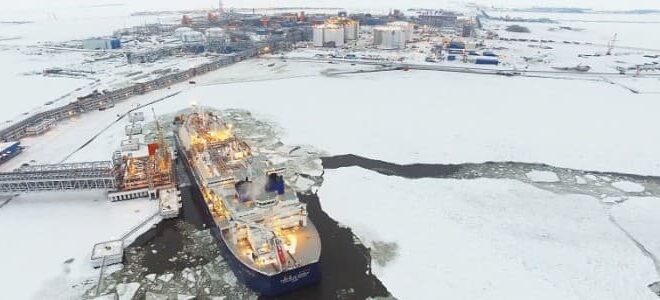U.S. sanctions have proven successful in suspending production at Arctic LNG 2 and delaying the expansion of the project, according to a U.S. State Department official.
“Putin hoped to ramp up output from Arctic LNG 2 during the first quarter of 2024 but has been unable to load even one cargo,” U.S. Assistant Secretary of State of Energy Resources, Geoffrey Pyatt, told gCaptain on Friday.
Mr. Pyatt’s comments come weeks after a major Chinese supplier for Arctic LNG 2, Wison New Energies, decided to cease all work with Russia and recall modules already en route for fear of secondary sanctions.
The supply of prefabricated modules by Chinese offshore yards is critical to Russia’s expansive liquefied natural gas (LNG) plans.
Moscow has been largely unable to push forward its LNG plans in the Arctic amidst a widening U.S. sanctions regime.
“The project was forced to suspend production in early April as a result of our sanctions, which are causing problems for development, sale, transport, and transshipment of Arctic LNG 2’s LNG,” Pyatt continued.
In line with Pyatt’s comments about Arctic LNG 2 suspending production in April, Novatek has slashed gas output at the project in recent months. Gas production decreased 75 percent from 215 million cubic meters in April down to just 55 million cubic meters in May, according to reporting by Reuters.
A copy of internal conversations at Arctic LNG 2 seen by gCaptain confirms that the project suspended production in April, with well pads stopped.
At the time staff on site prepared well pads for conservation. If shut-ins were to last less than 5-6 months production from wells could be restarted within a few months, the document showed. For conservation shorter than a month a restart would only take three days.
Across several rounds of sanctions, the U.S. has placed various levels of restrictions on Russia’s largest LNG producer Novatek, its Arctic LNG 2 project, associated ice-capable LNG carriers, and the project’s assembly yard.
“Our sanctions aim to degrade Russia’s future capacity to produce and export energy resources, severely constraining Russia’s ability to fund its brutal war in Ukraine and ever again weaponize its energy resources for political gain,” Pyatt elaborated.
Almost seven months after Train 1 of Arctic LNG 2 began production in December 2023, not a single delivery has been made.
Novatek was expected to initiate deliveries this summer using conventional or light ice-class vessels. Once sea ice returns to Arctic waters in the fall, exports require ice-capable vessels currently stuck in sanction limbo at South Korean shipbuilder Hanwha.
Industry insiders caution that repeated production restarts risk damage to the reservoir. It may thus not be prudent to start summer production only to have to shut down again in late October.
Decreasing gas production figures suggest that Novatek may not begin exports from Arctic LNG 2 until it has secured sufficient winter transport capacity.
Russia’s Zvezda shipyard may be able to deliver two Arc7 LNG carriers by the end of 2024 and in early 2025, though the exact buildout status of Aleksey Kosygin and Pyotr Stolypin remains uncertain following the departure of western companies from the yard. The U.S. measures earlier this summer also targeted the shipyard.
Russia’s energy project headaches extend beyond just Arctic LNG 2. Rosneft’s massive Vostok Oil project has similarly been targeted by U.S. sanctions.
“We also continue to designate a broad range of entities involved in development of other key future Russian energy projects and associated infrastructure, including the Vostok oil project, the Ust-Luga LNG terminal, and the Yakutia Gas Project,” Pyatt concluded.

 Iran Energy News Oil, Gas, Petrochemical and Energy Field Specialized Channel
Iran Energy News Oil, Gas, Petrochemical and Energy Field Specialized Channel



